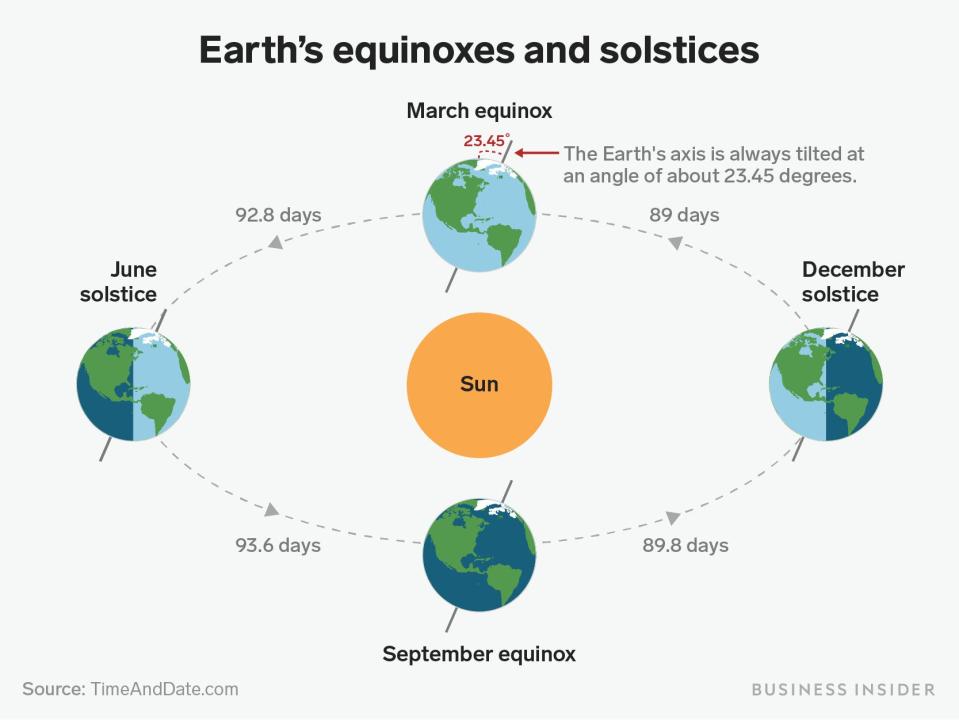The fall equinox is on Wednesday. A simple animation shows what equinoxes are and why they mark the change of season.

The fall equinox happens at 3:21 p.m. ET on Wednesday.
During an equinox, both halves of the Earth experience an equal 12 hours of sunlight and darkness.
A planetary scientist created an animation that shows how the planet's tilt creates equinoxes.
The fall equinox comes this Wednesday at 3:21 p.m. ET.
The day heralds the start of autumn in the northern hemisphere, which houses about 90% of Earth's population. For the southern hemisphere, it signifies the opposite: the beginning of spring.
It's one of two times during the year when Earth's axis isn't tilted towards or away from the sun - sunlight hits both hemispheres equally and both halves of the planet experience 12 hours of sunlight and darkness.
So if you were to stand on the equator at the exact time of an equinox, your shadow would be at its absolute minimum, and the sun would appear almost directly overhead. (That shadow-less moment would be fleeting, though since Earth moves around the sun at about 66,600 mph.)
To illustrate what's going on during an equinox, planetary scientist James O'Donoghue created an animation (below) last year. O'Donoghue, who works at the Japan Aerospace Exploration Agency, also included the summer and winter solstices.

Earth's tilt is responsible for equinoxes and solstices
Equinoxes are the products of Earth's axial tilt: the degree to which the planet is tilted relative to the sun. The axis around which the Earth spins isn't straight up and down - it's about 23.4 degrees off. Because of that, different parts of the Earth get exposed to more or less sunlight as the planet rotates around the sun. That's why we have seasons.
It's also why the northern and southern hemispheres experience seasons at opposite times: During winter in the northern hemisphere, the southern hemisphere is tilted more towards the sun and experiences summer, and vice versa.
Meanwhile, Earth is also constantly rotating, which keeps its heating even - a bit like a giant rotisserie chicken.

The axial tilt's most dramatic effect comes during the summer and winter solstices, since those are the two days of the year when one side of the planet is tilted the farthest away from the sun and the other is the closest.
During this year's summer solstice on June 20, parts of the northern hemisphere received nearly 16 hours of daylight, while regions in the southern hemisphere got less than nine.
Equinoxes occur halfway between the two solstices, marking the point when one hemisphere switches from tilting toward the sun to tilting away from it.
Read the original article on Business Insider

